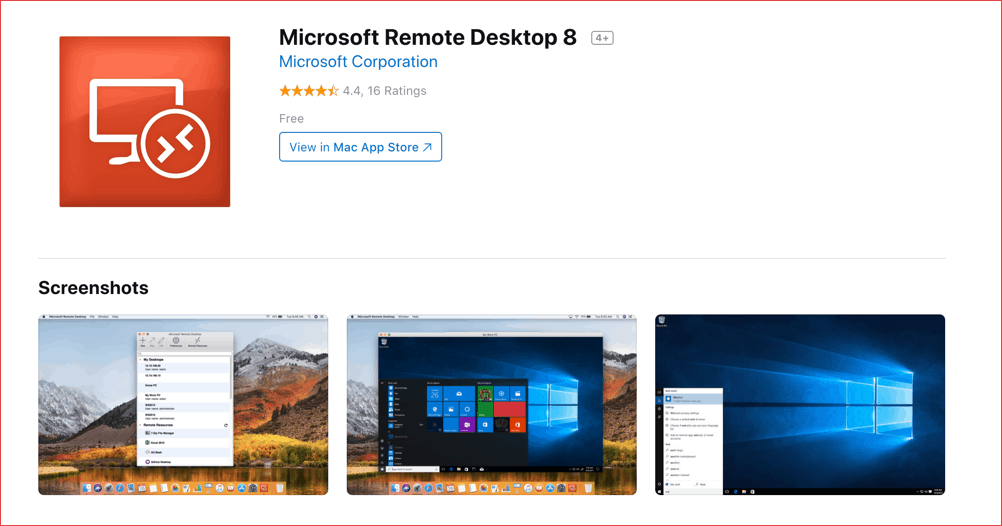

- #Apple remote desktop client install
- #Apple remote desktop client full
- #Apple remote desktop client software
The rest of the Remote Desktop connection’s settings concern resolution, colors, and full screen options. The advantage of using the computer name over an IP address is that the name remains the same unless you change it, whereas IP addresses can change from time to time. If you can’t remember what you named your computer, you can find that information on the “System” control panel. In the command prompt, type “ipconfig” and hit “Return.” You want to use the IPv4 address it gives you. Use the keyboard shortcut “Windows + R” and then type “cmd” to open a command prompt. If you want to know what your PC’s name and/or IP address is, you need to check. Also, if you do not want to enter your user name and password every time you connect, you can add them to the “Credentials.” Not entering any credentials means that when you connect to your Windows machine, you will need to log into an account. We don’t worry about configuring a gateway because we’re connecting to our PC within our local network. Next to “Connection name” we give it a friendly name while the “PC name” is either the name we gave our target PC or its IP address. Let’s take a moment, however, to click “Edit” and show you what’s involved. In our example, we’ve already set up a user profile, which is ready for action. Remote Desktop will be installed in your Mac’s Application’s folder.
#Apple remote desktop client install
You also want to make sure you install the Microsoft Remote Desktop client on your Mac. Open the System Properties and click the “Remote” tab, then make sure “Allow remote connections to this computer” is enabled. To connect to a Windows PC, you must first turn on remote connections. OS X and Windows have this ability built right into them, meaning you can easily share your Mac’s screen with Windows PCs, and vice versa.Ĭonnecting to Windows PC Clients from a Mac

#Apple remote desktop client software
You can rename systems, verify and repair hard disks, get reports on software that’s changed, and delete old software applications - all remotely.Sharing your screen remotely is a convenient way to access another computer as if you’re sitting in front of it. If you’re a system administrator, the software can provide remote assistance, get comprehensive system profiles, reconfigure system settings and distribute software applications across lots of computers. But if you’re a hardcore road warrior with a home or business system and a laptop, you’ll want Apple Remote Desktop on your notebook. I probably won’t use this feature very much. It worked well, although a bit slowly when using a 56k modem connection. I used my laptop to access some word processing files on my home office iMac. I did this with my iBook while visiting my parents one weekend. You can also work from home or another school by using Apple Remote Desktop to access your files and applications remotely. By sharing screens, I can proof read their work, make writing suggestions, etc. Namely, I’ve helped them on various school reports. After my first, prankish use of Remote Desktop at home, I’ve used it for more constructive purposes with Matt and Katie. Before my current career as a journalist, I was a teacher (seven years) and would love to have had Apple Remote Desktop and a room full of Macs for use with my students.Īs Apple points out, with Apple Remote Desktop, teachers can monitor students’ computer screens, perform group demonstrations and help individuals.


 0 kommentar(er)
0 kommentar(er)
